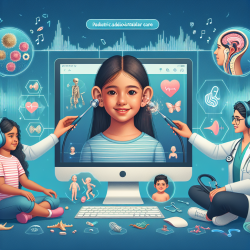As practitioners in the field of special education and speech-language pathology, we are constantly seeking ways to refine our therapy skills and approaches. Understanding the intricate relationship between language development and aging is crucial for enhancing our therapeutic techniques. The research presented in Language of the Elderly by Maxim and Bryan offers valuable insights that can significantly impact our practice. This blog aims to guide practitioners on how to implement the outcomes of this research or encourage further exploration into this fascinating area.
The book Language of the Elderly is a comprehensive resource that delves into the changes in language processing and performance in older adults. It presents a balanced perspective, integrating findings from various disciplines to provide a rich understanding of how language evolves with age. For practitioners working with elderly clients or those interested in the intersection of language development and aging, this book is an invaluable tool.
Here are several key takeaways from the research and how they can be applied to improve therapy skills:
- Understanding Language Variability in Aging: The book highlights the variability in language abilities among the elderly, challenging the notion of a uniform decline in language skills. Recognizing this variability allows therapists to tailor their approaches to meet the unique needs of each client.
- Assessment and Intervention: Maxim and Bryan discuss both structured and naturalistic assessment and intervention approaches. Integrating these methods into practice can lead to more holistic and effective therapy outcomes for older adults.
- Collaborative Consultation: The importance of a collaborative approach involving family members, caregivers, and other professionals is emphasized. This model fosters a supportive environment that enhances communication opportunities and therapeutic success.
- Social Interaction as a Therapy Component: The book advocates for incorporating social interaction into therapeutic plans. Engaging clients in meaningful social activities can improve their communication skills and overall quality of life.
- Adapting to Linguistic and Cognitive Changes: Understanding the specific linguistic and cognitive changes associated with aging is critical. This knowledge enables therapists to develop more effective strategies for addressing communication challenges.
For practitioners, staying informed about the latest research and trends in our field is essential. Language of the Elderly not only provides a solid foundation in understanding the nuances of language development in older adults but also encourages us to think critically about our therapy approaches. By incorporating these insights into our practice, we can enhance the effectiveness of our interventions and support our clients in achieving their communication goals.
Implementing the outcomes of this research requires a willingness to adapt and innovate. It may involve revising existing therapy programs, engaging in professional development activities, or collaborating more closely with clients and their support networks. The ultimate goal is to provide therapy that is responsive to the evolving needs of our clients, informed by a deep understanding of the complex interplay between language and aging.
In conclusion, Language of the Elderly is a seminal work that challenges us to expand our perspectives and enhance our therapy skills. By embracing the research findings and integrating them into our practice, we can make a meaningful difference in the lives of those we serve. For those interested in delving deeper into this topic, I highly recommend reading the original research paper.
To read the original research paper, please follow this Language of the Elderly.










